#Hare by Nancy Schön
Photo
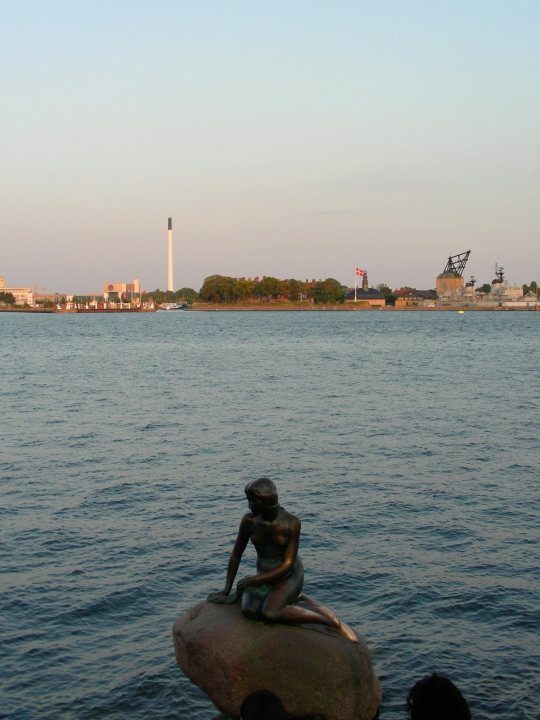

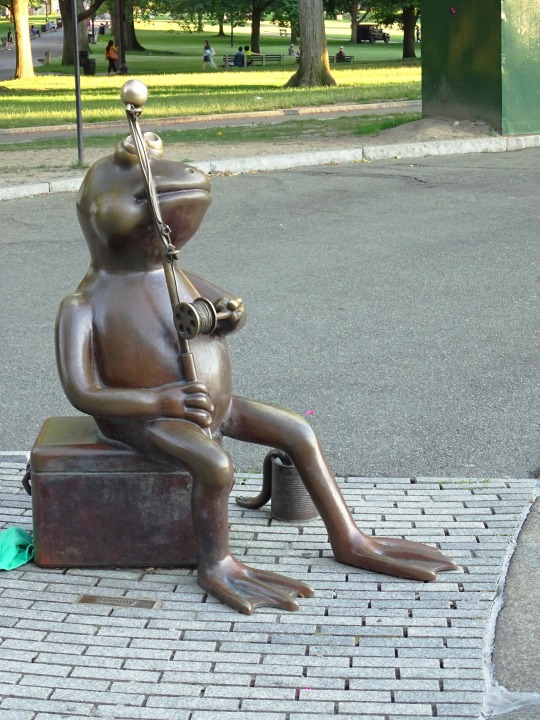
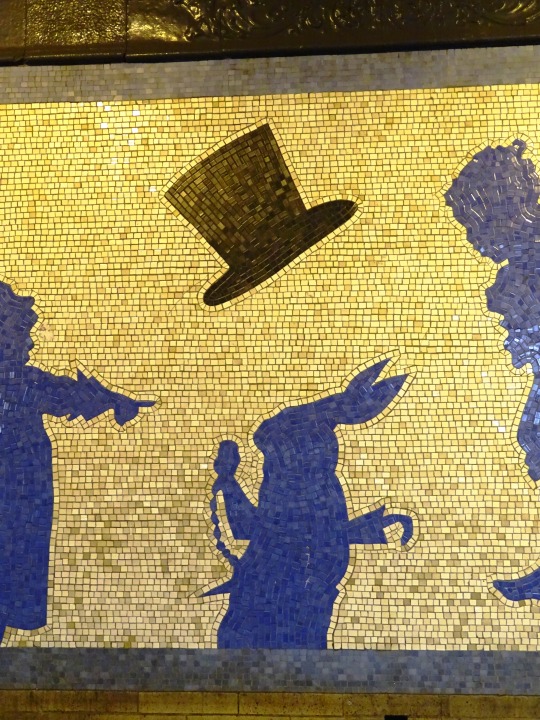




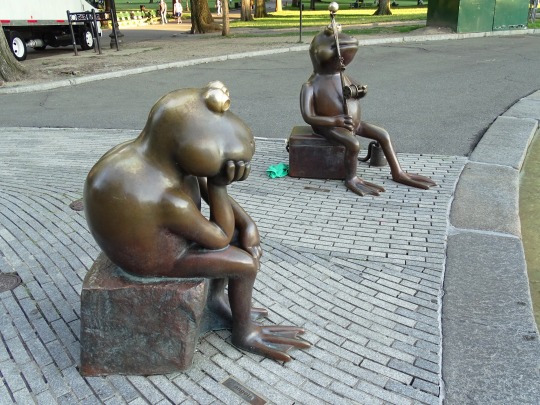
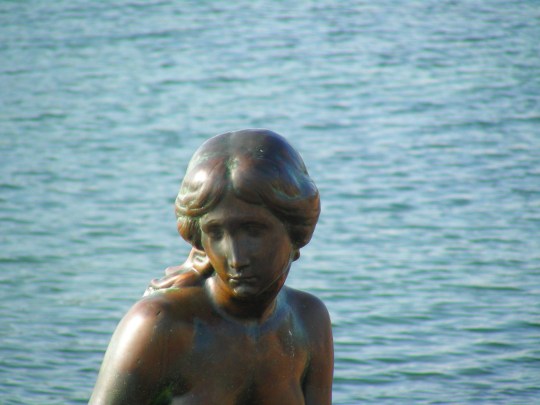
National Tell A Fairy Tale Day
Gather round the fire, and make yourselves comfortable… National Tell A Fairy Tale Day is all about exploring myths and stories, old and new. From grim(m) tales to urban legends, tap the dark corners of your subconscious and see what you find…
History of National Tell A Fairy Tale Day
The sharing of magical, otherworldly stories is a tale as old as time. While the term ‘fairy tale’ was coined in 1697 by Madame d’Aulnoy (conte de fées in her native French), it’s likely that some fairy tales originated as early as the bronze age over 6,000 years ago. And for most of history, fairy tales have been passed on not in written form but via the oral tradition, with each generation telling and dramatizing stories to the next.
The fairy tale’s ancient roots can be traced all over the world, from Vikram-Betaal in India and Aesop’s Fables in Ancient Greece to Arabian Nights in the Middle East. It was during the late 17th to 19th centuries that fairy tale collectors emerged, most famously Charles Perrault and the Brothers Grimm. While the Brothers Grimm aimed to preserve folktales in their pure form, documenting them in the way they were told by rural peasants unable to read or write, Perrault and others reworked fairy tales for literary and artistic effect, with some writers such as Hans Christian Andersen dreaming up their own new stories.
As the fairy tale’s history emerges into the modern day, it’s clear that the genre is still as popular as ever – look no further than the success of Disney movies to see how these stories continue to capture our hearts and imaginations. In fact, the famous Disney castle is inspired by Neuschwanstein Castle in Germany, built by none other than the Märchenkönig (fairy-tale king), Ludwig II of Bavaria, himself. Perched on a rocky hill and with horse-drawn carriage rides up to the front door, Neuschwanstein and its elaborate interior abound in myths and legends – the castle is even home to an artificial grotto!
By celebrating National Tell A Fairy Tale Day, you’ll be continuing the magical tradition that has ensured fairy tales are still very much part of our lives to this day.
National Tell A Fairy Tale Day Timeline
3000 BC – 1200 BC Fairy Tales get their beginning
During the Bronze Age, stories are passed down orally through Eastern and Western Indo-European languages. This includes stories such as Jack and the Beanstalk, Beauty and the Beast, as well as many others.
1697 Term “Fairy Tale” is coined
French literary fiction writer, Madame d’Aulnoy publishes her own book of Fairy Tales and is the first to use the term which, in French, is conte de fées. She is one of many female fairy tale writers during this era.
1697 Charles Perrault publishes his first book
This French author publishes a story collection that not only includes Little Red Riding Hood, but the grouping is subtitled as “Tales of Mother Goose”.
Early 19th Century Brothers Grimm popularize Fairy Tales
Jacob and Wilhelm Grimm are German academics who collect stories from German folklore and retell them. Many of these stories are similar to those of French storyteller, Charles Perrault, from a century prior.
1837 Hans Christian Andersen publishes The Little Mermaid
Included in the first collection of Fairy Tales Told for Children, which is published in Copenhagen, The Little Mermaid is probably one of the most popular of Anderson’s tales.
How fairy tales change over time
Perhaps one of the most interesting aspects of fairy tales is how they change over time. Simple plot structures, motifs and archetypal characters recurring across many cultures make these stories rife for adaptation and reinterpretation.
Although nowadays we usually associate fairy tales with children’s literature, you may be surprised to learn that many of today’s beloved stories have rather dark and disturbing origins. Imagine a world in which no woodcutter comes to save Little Red Riding Hood from the wolf’s belly, or in which one of the ugly stepsisters cuts off her own toes so that her foot fits in the slipper! From the 18th century onwards, many fairy tales were toned down and reworked so that they were more suitable for children.
These stories and the genre itself have also been adapted and reinvented for different time periods and cultures. Alongside original modern-day fairy tales, there are also various retellings, for example in urban settings or different countries. One particularly common type of retelling comes from women writers. Authors such as Angela Carter and Margaret Atwood have taken what are often seen as outdated tropes about women and reinvented them – the damsel in distress becomes the plucky heroine, and the trapped bride leaves her ogre husband for her happily ever after.
Why fairy tales are important
As it is often claimed Albert Einstein once said, “If you want your children to be intelligent, read them fairy tales. If you want them to be more intelligent, read them more fairy tales.” We might not expect such high praise for fairy tales from a world-famous theoretical physicist, but Einstein recognized the importance of the imagination. Fairy tales are incredibly valuable for both children and adults when it comes to learning about the world in which we live and developing our capacity for creativity. Fairy tales have also been considered fertile ground by psychoanalysts. With their twists and turns, age-old themes and familiar characters, our favorite stories may reveal not only the workings of our personal subconscious but also the fundamental elements of our collective psyche.
How to celebrate National Tell A Fairy Tale Day
It should be clear by now that, when it comes to celebrating National Tell A Fairy Tale Day, you really can let your imagination run wild! And while it’s a day that kids will love, it’s also a great occasion for adults too.
Gather your friends and family and take it in turns to share your favorite stories with one another. Time to brush up on your acting skills, as the more dramatic enactments the better – whether you’re good at impersonating a wicked witch or excel at acting out the characters’ quest through the enchanted forest, you’ll want to really make the tale come to life for your audience. And why not sit around a bonfire toasting marshmallows or string up some fairy lights in your living room to add to the atmosphere?
Alongside sharing the stories we know and love, fairy tales are the perfect genre for getting creative and honing your writing skills. Take a well-known story and tweak it to fit a different time or setting, or have a crack at inventing your own. It may well start with ‘Once upon a time’, but it’s completely up to you whether there’s a ‘Happily ever after’! Many libraries and literary organizations will also share stories and creative resources and even hold events to help mark the occasion.
If writing’s not your thing, then there are plenty of films and programs based on fairy tales for you to enjoy. Disney’s Snow White and the Seven Dwarves, Cinderella and The Little Mermaid are just some examples of the media giant’s adaptations, while movies and TV series such as Into the Woods and Tell Me a Story interweave and retell various classic fairy tales for new audiences.
And if you feel like going all out, why not host a fairy tale themed party? Encourage your guests to come in fancy dress, put on an enchanted feast of yummy snacks such as gingerbread houses and toadstool cupcakes, and throw some legendary party games like hunt the pea and castle building.
However you choose to celebrate National Tell A Fairy Tale Day, it’s sure to be a magical occasion!
National Tell A Fairy Tale Day FAQs
What is a Fairy Tale?
Also called wonder tales, magic tales or fairy stories, Fairy Tales are a genre of fiction originating in European folklore. These tales often feature mythical creatures such as elves, dwarves, giants, fairies, gnomes, mermaids and more.
Who wrote the first Fairy Tales?
The original stories were passed down orally for thousands of years so it’s impossible to tell who started them. However, some of the first Fairy Tales that were written and published were by French Authors Charles Perrault and Madame d’Aulnoy.
What are the most popular Fairy Tales?
A favorite part of many childhoods, some of the most popular stories of all time include Cinderella, Beauty and the Beast, Little Red Riding Hood, Snow White and the Seven Dwarves, Jack and the Beanstalk and Sleeping Beauty.
Which Fairy Tales are Grimm?
In the early 19th century, the Grimm Brothers spent time collecting stories from people of all classes in Germany. Some of their Fairy Tales include Cinderella, Snow White, Hansel and Gretel, Rapunzel, The Frog King, Rumplestiltskin and Little Red Riding Hood.
When is Tell a Fairy Tale Day?
Each year on February 26, National Tell a Fairy Tale Day is the perfect time to spend time reading and making up stories with children.
Source
#Hans Christian Andersen by Georg John Lober#Central Park#New York City#The Little Mermaid by Edvard Eriksen#Copenhagen#Denmark#travel#USA#vacation#Boston#Massachusetts#Boston Common#subway#sculpture#Frogs at Tadpole Playground by David Phillips#Alice The Way Out by Liliana Porter#Hare by Nancy Schön#National Tell A Fairy Tale Day#NationalTellAFairyTaleDay#26 February
2 notes
·
View notes
Photo

Tortoise and Hare at Copley Square Nancy Schön May 1995 She created this is a permanent tribute to the runners from all over the world that have participated in the Boston Marathon. How fitting as I close my chapter on Boston. This was my last stop before heading to the airport. The other pics are from Copley Square as well. Not sure yet as to why the Boston Marathon recognition is here, but worth the research. The mural was an extra added gem. Not sure who sponsored it. There are more pics to come. What a weekend! . . #tortoiseandthehare #bostonmarathon #instacool #instawow #community #discoverboston #sculptureart #thingstodoboston #creativeart #publicart #celebrateart #wilworksboston #seenonmywalk (at Copley Square) https://www.instagram.com/p/BzEwauLHSXx/?igshid=18krc2f9xe6hw
#tortoiseandthehare#bostonmarathon#instacool#instawow#community#discoverboston#sculptureart#thingstodoboston#creativeart#publicart#celebrateart#wilworksboston#seenonmywalk
0 notes
Text
Animal Statues in Boston: A Guide!
1. Make Way for Ducklings
If you’ve ever read the classic picture book Make Way for Ducklings by Robert McCloskey, you’ll want to visit the Boston Public Garden to see the family of bronze ducks that brings the story to life. This work was created by Nancy Schön in 1987 to celebrate the 150th anniversary of Boston Public Garden. The artist breathed life into the ducks; the mother duck leading eight little ducklings on their way to find their new home in Boston. People put seasonal decorations on the ducks so you never know what they will look like next time you pass by. It might seem to appeal to children, but it is definitely worth visiting any time during the year, no matter what age you are!

2. Frogs of Tadpole Playground
The Frog Pond was first opened in 1894 and it has been a favorite place for kids to learn skating and do other fun activities ever since. You might have seen these strange frog statues at the Boston Common Frog Pond and wondered what they are doing. These bronze statues were created in 2003 by local Boston artist David Phillips, and soon became popular among all age groups. People love these frogs doing human things. You should definitely go and meet them!
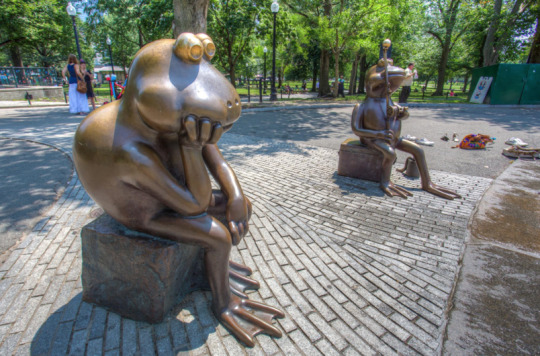
3. The Tortoise and the Hare
In Back Bay, there is another work by Nancy Schön. This time, the artist brought the Tortoise and the Hare story to life. However, this time, Nancy was aiming to pay tribute to Boston Marathon participants and remind the public that “slow and steady wins the race.”
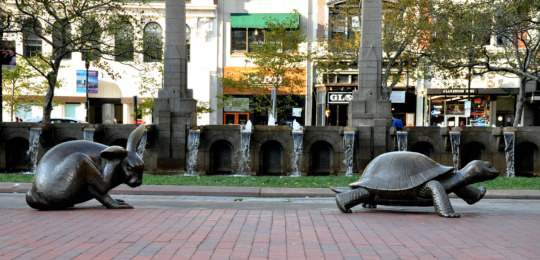
Get exploring and check out these critters (and other statues around Boston) today!
(Mira Ma, QSB ‘18)
#Mira Ma#studentlife#boston#statues#animals#explore#MA#buny#rabbit#turtle#tortoise#frog#frog pond#boston marathon#tribute#ducks#make way for ducklings#robert mccloskey
5 notes
·
View notes
Photo
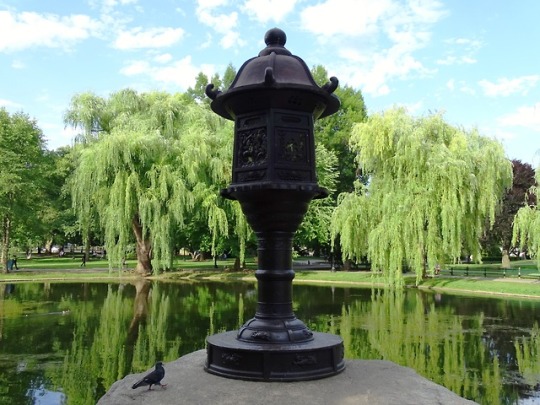
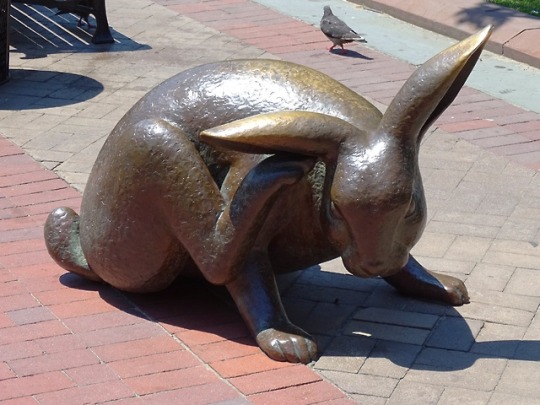




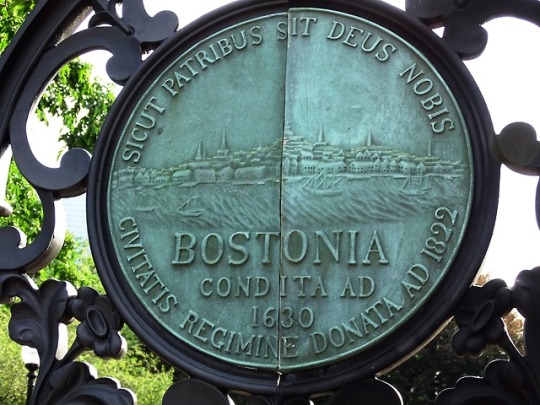

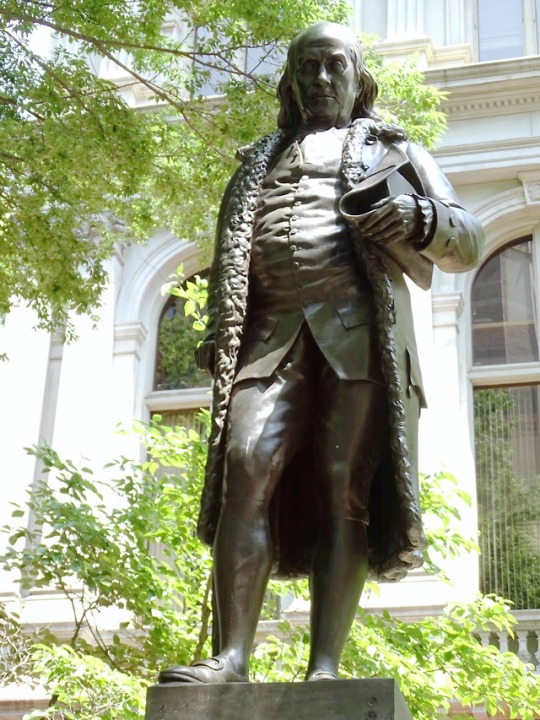

Public Art, Boston (No. 3)
The culture of Boston, Massachusetts, shares many roots with greater New England, including a dialect of the Eastern New England accent popularly known as Boston English.The city has its own unique slang, which has existed for many years. Boston was, and is still, a major destination of Irish immigrants. Irish Americans are a major influence on Boston's politics and religious institutions and consequently on the rest of Massachusetts.
Many consider Boston a highly cultured city, perhaps as a result of its intellectual reputation. Mark Twain once wrote of it, "In New York, they ask, 'How much money does he have?' In Philadelphia, they ask, 'Who were his parents?' In Boston they ask, 'How much does he know?'"Much of Boston's culture originates at its universities.
Museums dedicated to visual art in the Boston area include the Museum of Fine Arts, the National Center of Afro-American Artists, the Institute of Contemporary Art and the Isabella Stewart Gardner Museum. Notable art museums and galleries are associated with Harvard University, Boston University, the Massachusetts Institute of Technology, Boston College, Brandeis University, Tufts University, Wellesley College, MassArt, and other schools.
Numerous art galleries are located on Newbury Street, in the South End and in the Fort Point Channel area. Some of the most influential and longest running galleries in these areas include the Bernard Toale Gallery, Barbara Krakow Gallery, Howard Yezerski Gallery. The Boston Sculptors Gallery is one of only a handful of cooperative sculpture galleries in the country. The Boston Art Dealers Association sponsors artist talks, panels and awards ceremonies on a seasonal basis.
The Boston Cyberarts Gallery (formerly Axiom Center for New and Experimental Media) is one of several venues showing cutting-edge "high tech" and experimental artworks. The Boston Cyberarts Festival, a biennial area-wide celebration of the intersection of art and technology, ran from 1999 to 2011. The periodic Festival has been replaced by year-round programs, as described on their websites.
In addition, the Boston Public Library (BPL) and the Boston Athenæum each have large collections of art, books, and research materials, and regularly host cultural events and exhibits. The BPL collects and exhibits drawings by living Boston artists, and the Athenæum hosts annual shows by member artists.
The Penny Arcade Expo, or PAX East convention is also held here every year in March. This event is known as one of the largest gatherings of gamers and exhibiting studios, next to other major events like the Game Developers Conference. Growing exponentially with each annual iteration, the expo is well known to many in the gaming industry, and continues to draw crowds every year to the Boston Convention Center.
Source: Wikipedia
#Hare by Nancy Schön#public art#boston#original photography#George Washington by Thomas Ball#Japanese Garden Lantern#cityscape#Boston Public Garden#Bagheera Fountain by Lillian Swann Saarinen#Charles Street Gate#Benjamin Franklin by Richard Saltonstall Greenough#relief#massachusetts#tourist attraction#old city hall#usa#summer 2018#travel#vacation#road trip
3 notes
·
View notes